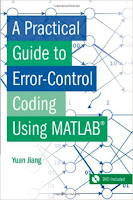Engineering Mechanics: Statics 15th SI Edition
Russell Hibbeler ... Language: English - Publisher: Pearson, (2022) - ISBN-10: 1292444045 - ISBN-13: 978-1292444048.
Engineering Mechanics is your clear, comprehensive guide to the theory and application of engineering mechanics. Drawing upon his decades of classroom experience and his knowledge of how students learn, Professor Hibbeler provides highly visual, methodical applications to help you conceptualize and master difficult concepts. A variety of problem types stress realistic situations encountered in the field, with several levels of difficulty to give you the practice you need to excel in your courses and career. The 15th Edition features a large variety of problems, about 30% which are new, which involve practical applications to different fields of engineering.
Contents: General Principles + Force Vectors + Equilibrium of a Particle + Force System Resultants +Equilibrium of a Rigid Body + Structural Analysis + Internal Forces + Friction + Center of Gravity and Centroid + Moments of Inertia + Virtual Work
Engineering Mechanics is your clear, comprehensive guide to the theory and application of engineering mechanics. Drawing upon his decades of classroom experience and his knowledge of how students learn, Professor Hibbeler provides highly visual, methodical applications to help you conceptualize and master difficult concepts. A variety of problem types stress realistic situations encountered in the field, with several levels of difficulty to give you the practice you need to excel in your courses and career. The 15th Edition features a large variety of problems, about 30% which are new, which involve practical applications to different fields of engineering.
Contents: General Principles + Force Vectors + Equilibrium of a Particle + Force System Resultants +Equilibrium of a Rigid Body + Structural Analysis + Internal Forces + Friction + Center of Gravity and Centroid + Moments of Inertia + Virtual Work



















